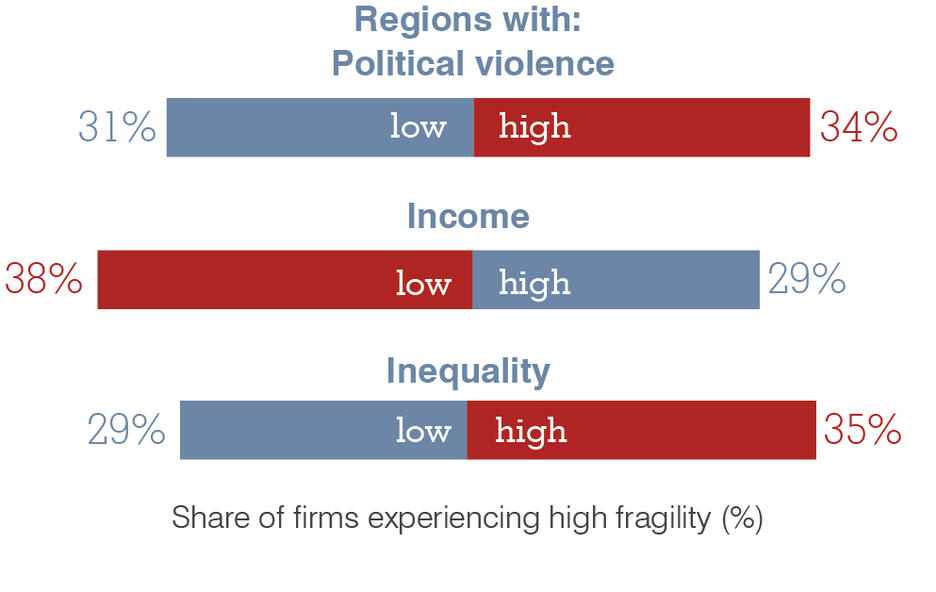
Fragility from a business perspective
Fragility manifests in different ways, across countries, regions and types of firms. The new ITC Fragility Exposure Index shows that small, informal, youth, and women-led firms often experience harsher repercussions from fragility than their larger, formal, older, and men-led counterparts, respectively.
These nuances matter: what works well in one context can backfire when tried somewhere else. Taking these differences into account is crucial to ensure that support programmes and policies are targeted to local and firm contexts.
The world is grappling with unprecedented crises. The quadruple shock of COVID-19, conflict, climate change and higher cost of living threatens to push countries into greater fragility.
While much attention has been given to measuring and addressing fragility at the macro (state) level, fragility differs at the micro (business) level. As such, macro measurements must be complemented by micro assessments to ensure that support programmes and policies are targeted to local contexts.
To assess how different businesses experience the same overarching level of fragility, ITC constructed a new Fragility Exposure Index based on firms’ responses to the ITC Small Business in Fragility Survey in eight countries. The ITC Fragility Index recognizes that fragility is multilevel and multidimensional. The index has three dimensions:
- Security: measures the impact of insecurity and violence on businesses
- Economic: measures the impact on firms’ economic performance and opportunities
- Social: measures the impact on company relationships

While a country may be entirely classified as fragile, sub-nationally conditions may differ widely.
Findings from ITC's newest flagship edition SME Competitiveness Outlook 2023 affirm that firms in conflict hotbeds, in poorer areas, and regions where inequality is more marked experience fragility more intensively.
Businesses in violent, poor and unequal regions are more affected
Source: ITC SME Competitiveness Outlook 2023
Beyond location, the characteristics of a firm also contribute to its fragility exposure.
Smaller firms were more likely to report intense experiences of fragility: 34% of MSMEs reported experiencing high levels of fragility, compared with 18% of large firms.
Informality further exacerbates the effects of fragility. Informal firms were almost 10 percentage points more likely to report experiencing fragility intensively than formally registered ones. This is partly because informal firms are largely excluded from institutions that can provide the services they need to survive.
Women-led firms, even in non-fragile settings, face disadvantages in term of access to public infrastructure services, finance and social protection. In fragile settings, additional factors such as women’s increased exposure to violence, make them even more vulnerable. Youth-led enterprises, partly due to their cautious approach and focus on risk minimization, also report higher levels of fragility compared to non-youth-led companies.
More small, informal, women-owned and youth-led firms experiencing high fragility
Source: ITC SME Competitiveness Outlook 2023
The heterogeneity of fragility, and of how firms experience it, make it impossible – if not downright damaging – to deploy a one-size-fits-all approach. Still, it is possible to identify some actions that can improve firm resilience in such situations.
The SME Competitiveness Outlook 2023 identifies three actions that help improve firms’ outcomes in the face of fragility:
1. build connections;
2. improve financial management;
3. identify and retain skilled staff.






